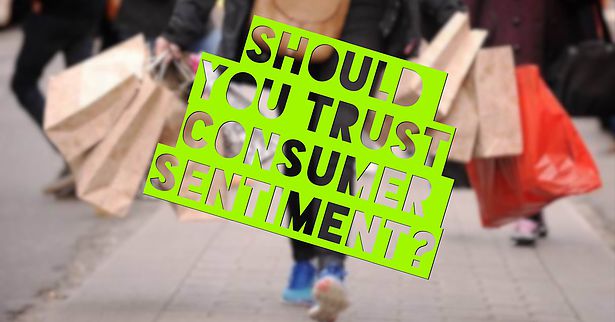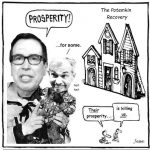
Today I want to talk about the latest report of consumer sentiment (released on January 15) because it’s laughable just how much the media gets freaked out over why consumers are too stupid to realize that the stock market is crashing and why consumers are (God forbid) still buying things? It essentially looks like the cartoon below anytime a consumer sentiment report comes out.

The University of Michigan’s consumer survey center interviews about 500 U.S. households twice per month, every month, and asks questions related to their financial conditions and attitudes about the economy. The theory is that consumer SENTIMENT is directly related to consumer SPENDING, and you can see right away (because you’re all smart) what the problem is here.
Did YOU stop shopping when you learned that the Chinese economy is tanking? The Dow Jones Industrial average lost a ridiculous amount of money in the past couple weeks – did you not buy milk this week?
It’s a silly assumption to think the two are perfectly correlated, although I do believe that it is still important to survey households on their thoughts and feels about financial pressures and their opinions on the economy. China’s economic weakness is expected to have a resonating impact on the U.S. consumer, yet the initial reading this month for consumer sentiment definitely does not show that.
I created the chart below to show the general correlation between consumer sentiment and the stock market (in this case I used the S&P 500 because it covers the 500 largest publicly traded companies in the U.S. instead of just the top 30 like the Dow Jones Industrial Average). Around the year 2000 both measurements were closely correlated as this was before the tech bubble burst and caused the steep drop late in 2000, and before the market pulled back after 9-11.
















Leave A Comment